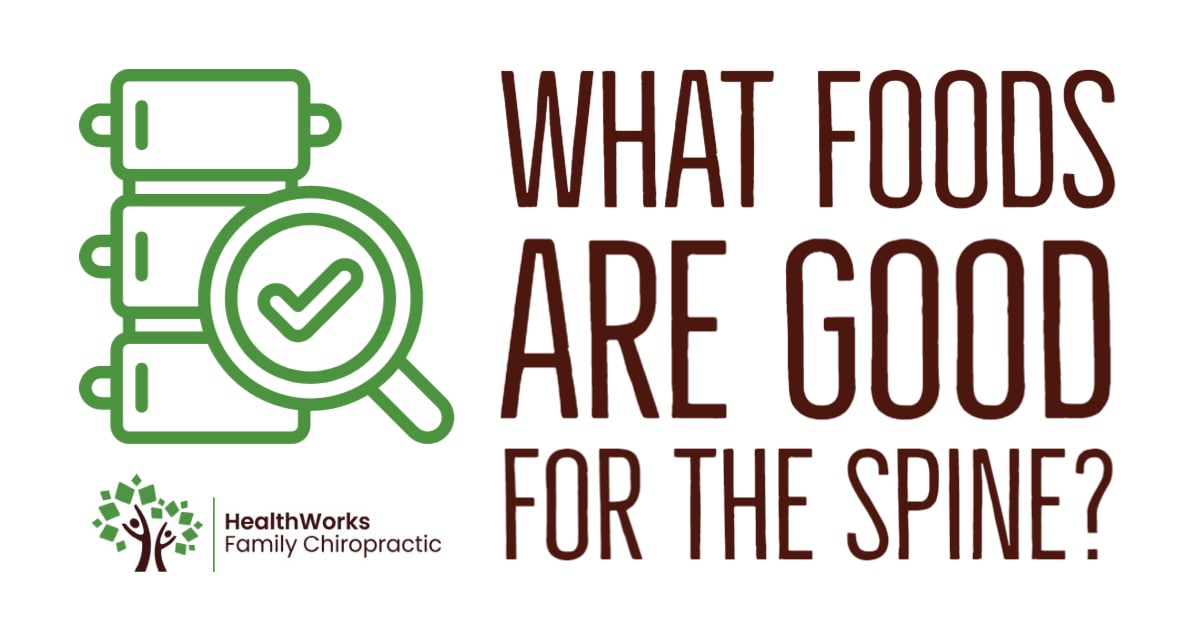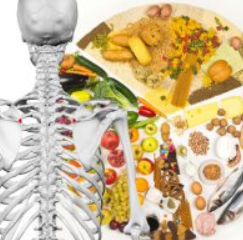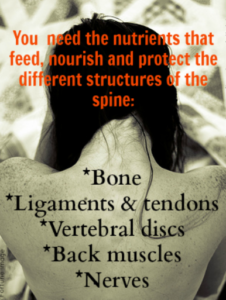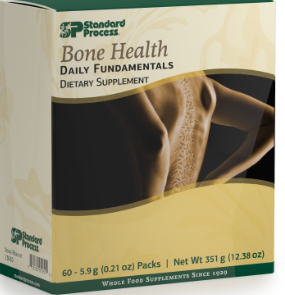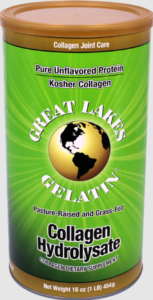Proper nutrition assures that the process of the body’s growth, repair, and maintenance is achieved through the consumption of food that we choose to eat on a daily basis. In order to be the owner of a healthy body, a balanced diet must be consumed to ensure sufficient nutrients and energy for the body to perform and sustain its everyday functions. Consuming the correct nutrients in the correct amounts gives our bodies the necessary tools to become strong, healthy, and disease resistant.
Have you ever thought specifically about what role proper nutrition plays in your spinal health? The nerves, bones, discs, muscles, tendons, and ligaments that make up the spinal complex also require sufficient nutrition to perform all the daily movements we ask it to carry out every day. Daily spinal movement, hydration, and nutrients help to ensure that these tissues are strong enough to support the body and protect the neuromusculoskeletal system. Without a healthy spine, we would not be able to carry out the same movements efficiently and, over time this leads to damage, inflammation, and finally, pain.
The brain, spinal cord, and peripheral nerves make up the Central Nervous System that is housed within the boney spinal column, and acts as a gateway between the brain and the rest of the body, including our muscles and organs-it’s simply not a coincidence that the most important system in the body is completely encased in the bone! So, doesn’t it make sense that having an unhealthy spine would not only present itself as pain, discomfort, and tension that might limit our everyday movements but may also manifest as dysfunction or disorders in our organs? Simply put, proper nutrition helps promote a healthier you.
How do you nourish your spine?
Maintaining the strength and structure of this complex structure requires an understanding of what nutrients feed, nourish, and protect the different tissues of the spine. All the structures mentioned above need specific nutrients to keep them healthy, therefore providing protection and the building blocks for healing from injury, degeneration, and pain.
Every nutrient needed for spine health has a healthy food source. Nutrition that comes straight from food is always better absorbed and utilized than just taking a vitamin or supplement. It also greatly depends on the quality and sources of food you can obtain. So many of our food sources are compromised in their nutrient density due to poor farming practices and the way animals are raised. So, in cases of extreme deficiency, injury, or food quality compromises, supplementation may be necessary.
Let’s go over both the food sources and supplementation for each of these tissues.
There are 33 vertebrae in the spine. The older we get, the less efficient our body becomes in absorbing vitamins and minerals, especially if we are put on multiple medications. Also, if the structure of our spine is compromised, our vertebrae will begin to degenerate.
- Bone spurs, which can be called degenerative joint disease, can form on the vertebrae of the spine causing pain. This is primarily due to having a poor structure that, for too many years, has had to compensate and lay down more bone tissue to keep you upright on two feet. This is called Wolff’s Law. Wolff’s Law states that bone will adapt to the load or stress placed upon it. This means that increased loading of bone tissue will promote increased density. This is why many individuals with osteopenia or osteoporosis utilize resistance training to stimulate bone growth. However, when the stress or load on the bone is abnormally loaded, Wolff’s Law can contribute to the progression of spinal degeneration.
- Osteoporosis is another common culprit in the breaking down of the vertebrae bones of the spine.
The vertebrae of our spine, like all bones, are composed of minerals. Sufficiency of these minerals and being able to utilize them is what prevents the bone from becoming brittle or weak. Some of the most important nutrients in bone formation and maintenance include:
- Calcium: Found primarily in whole, organic dairy products. Kale and broccoli are excellent sources of bio-available calcium, especially for those that are dairy sensitive.
- Magnesium: Dark chocolate, yes, chocolate source of magnesium! Nuts like almonds, cashews, Brazil nuts, and sunflower seeds are also high in magnesium.
- Phosphorus: Also found in many nuts and seeds like Brazil nuts, sunflower seeds, and pumpkin seeds.
- Vitamin D: Eggs and fatty fish like anchovies and salmon are great healthy food sources of vitamin D. However, let’s not forget the sun! Twenty minutes a day of sunlight is the best way to get vitamin D and will meet your daily requirements for mineral absorption.
- Vitamin K: Leafy greens, broccoli, asparagus, and cucumber are natural sources of vitamin K.
- Supplementation: Standard Process—Daily Fundamentals for Bone Health. Contains all the above vitamins and synergistic minerals that can make a great addition to the healthy foods listed above.
When our joints are not moving properly due to a misaligned and structurally compromised spine, this causes inflammation, which then causes pain. This inflammation surrounds the joint and spreads to the connective tissues of the vertebral complex and further compromises the stability of the spine. These tissues are ligaments, tendons, and vertebral discs of the spine and are made up of collagen and cartilage.
Discs provide cushion and act as a shock absorber between each vertebra. Herniated and bulging discs are one of the most common and painful problems one can endure when experiencing back pain. However, an inflamed ligament or tendon can also cause extreme pain and discomfort when there is inflammation, pressure, or irritation in the nerves of the spine. A specific chiropractic adjustment can provide the most relief and addresses the actual cause of the inflammation, however, especially at the beginning of care, other options to help reduce inflammation are key for comfort and healing. Reducing the inflammation allows the nerves to quit firing pain signals and therefore brings relief.
Eating anti-inflammatory foods is not only extremely beneficial to help with the pain but will also ensure that the tissues have the building blocks they need during your care to heal effectively. Eating highly processed junk foods decreases your ability to heal, so while under chiropractic care, it’s even more important to gain the most from each adjustment.
Collagen is a major component of our connective tissues. Eating foods that support this matrix will directly target ligaments, tendons, and discs and keep them flexible.
- Manganese: Found in dark chocolate (yeah!), pumpkin seeds, pine nuts, and pecans. Manganese is very important in the synthesis of cartilaginous tissue.
- Omega-3: Found in fatty fish like sardines, tuna, and salmon. Omega-3s are both collagen-forming, as well as anti-inflammatory. Fish oil is the best source for proper absorption in humans.
- Antioxidants: High-antioxidant foods include berries (blueberries, raspberries, and blackberries), red beans, and dark chocolate. Antioxidants support collagen formation and have anti-inflammatory properties, as well.
- Vitamin C: Our bodies need vitamin C to produce collagen. Vitamin C-rich foods include oranges, lemons, limes, spinach, kale, and strawberries.
- Sulfur: Collagen cannot be formed without sulfur. Foods high in sulfur include broccoli, cabbage, cauliflower, cottage cheese, and onions.
- Vitamin A: Vitamin A is vital in the repair of damaged collagen. Carrots and sweet potatoes are two of the best food sources to incorporate into your diet for adequate vitamin A.
A quality and affordable choice in a collagen product are Great Lakes Collagen Hydrolysate. It can be found on Amazon and most health food stores.
The muscles of the spine control its movement and provide support. Strengthening these muscles with the personalized exercises HealthWorks provides is the best way to keep the back strong and prevent compromise of the spine. However, our muscles require adequate nutritional support, as well. The primary source of nutrition for our muscles is protein. Some fantastic protein sources to incorporate into your daily diet include:
- Grass-fed red meat
- Pastured chicken
- Pastured eggs
- Quality, undenatured (low heat processed) whey protein.
A protein source should be included in every meal. The essential amino acid profile in animal protein is the most bioavailable source for the human body. Vegetarian sources like beans and legumes do contain essential amino acids, but do not contain the complete profile needed to heal and maintain the muscle mass needed, especially later in life. In order to digest animal protein properly, chewing your food adequately will start the process, and only eating about 3-4oz per sitting is appropriate. Without adequate protein, our muscles will begin to waste away. Remember, it’s difficult to have a healthy spine without having strong muscles—they are what animates our body!
A great source of undenatured whey protein is from Standard Process.
What nutrients do nerves need?
Most spinal pain occurs due to irritation of the nerves exiting the spinal column due to subluxations or misalignments of the spine. The sciatic nerve, which runs from the lower back to the lower legs, is one of the most common complaints of nerve pain, and nerves in the neck can create monster headaches! There are several foods that contain nutrients that can help calm the nerves, therefore providing pain relief.
- L-Tryptophan: This amino acid helps to calm our nerves by boosting serotonin levels in the body. Dark chocolate and undenatured whey protein contain high levels of naturally occurring L-tryptophan.
- B-Vitamins: Commonly called stress vitamins. When our body is stressed, it burns through these vitamins like kerosene, so replenishing them is essential to help calm your nerves. Foods high in B vitamins include sweet potatoes, yams, lentils, and chickpeas.
- Magnesium: A calming mineral for the nervous system, also known as the stress mineral, magnesium is found in dark chocolate, bananas, Brazil nuts, and almonds.
So, what have we learned??? DARK CHOCOLATE is the bomb! How about a recipe courtesy of bakeitpaleo.com? Cookies!
These paleo chocolate cookies are made with simple, grain-free, and dairy-free ingredients. Since they contain chocolate and collagen, they are higher in protein and lower in sugar than your average cookie. This is great if you’re looking for a cookie that contains more nutrition and healthier ingredients.
Ingredients
- ½ cup Sunflower seed butter (or any creamy nut butter)
- 1 large egg
- 1 tsp vanilla extract
- ¼ cup Great Lakes Collagen
- ¼ cup coconut sugar
- 4 TBSP cocoa powder
- ½ tsp baking soda
- 1/8 tsp salt
- ¼ cup dark chocolate chips
Instructions
- Preheat the oven to 350 degrees F.
- In a medium-sized mixing bowl, combine sunflower seed butter, egg, and vanilla.
- Add in the remaining ingredients, except chocolate chips. Mix well.
- Fold chocolate chips into the dough**
- Scoop dough onto a baking sheet (about 1 Tbsp dough per cookie).
- Bake in the oven at 350 degrees for 12-14 minutes.
- Remove from oven, cool for a couple of minutes, then transfer to wire cooling rack.
Enjoy!
Our promise to you
HealthWorks is dedicated to a comprehensive and specific approach to taking care of spinal and nervous system needs. Let us help you find out how taking care of the most important system in the body will create optimal health that will last a lifetime!
If we find we’re not the best suited to help with your condition or it is out of our scope of practice, we promise to refer you to someone who is.
